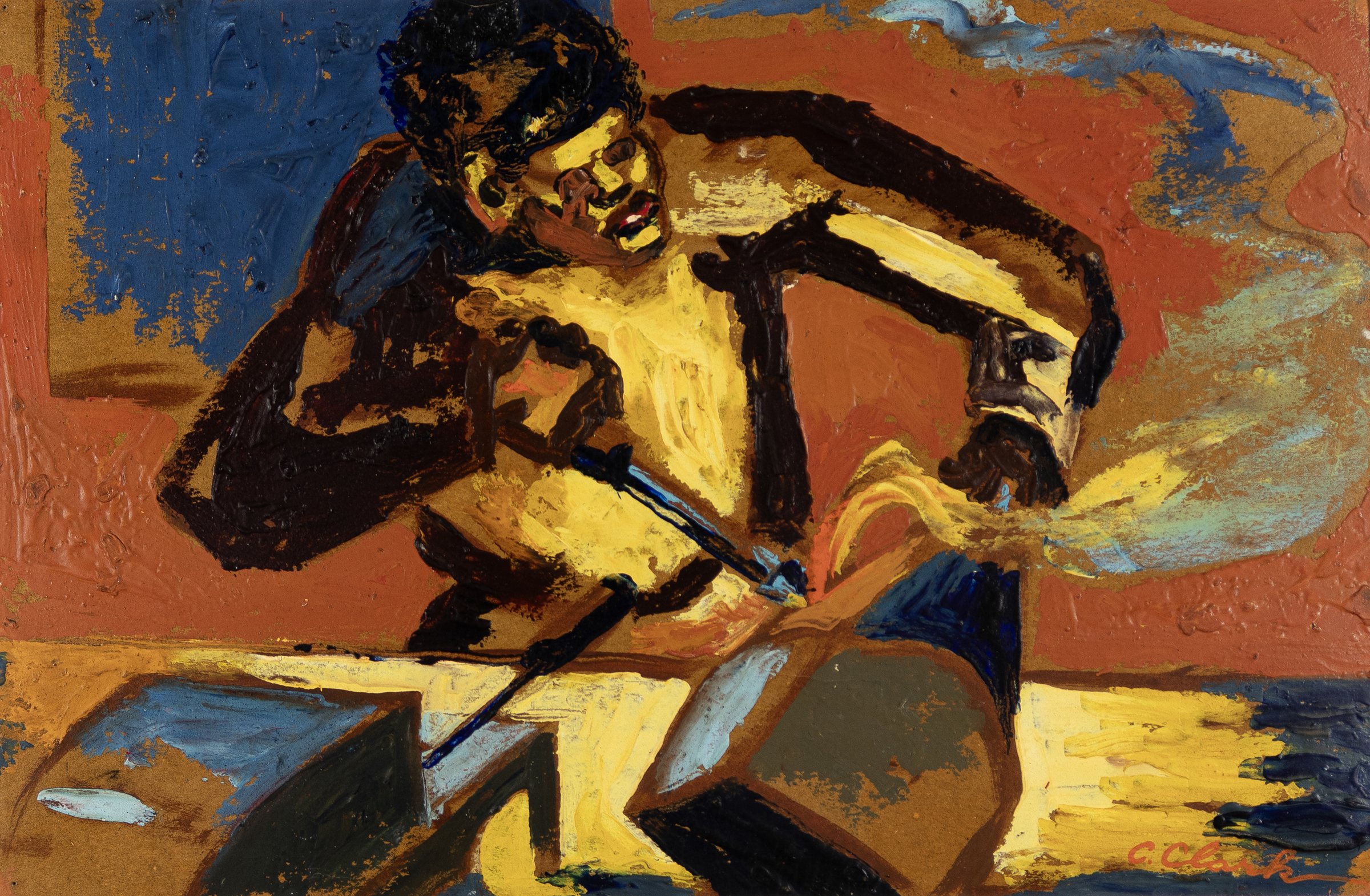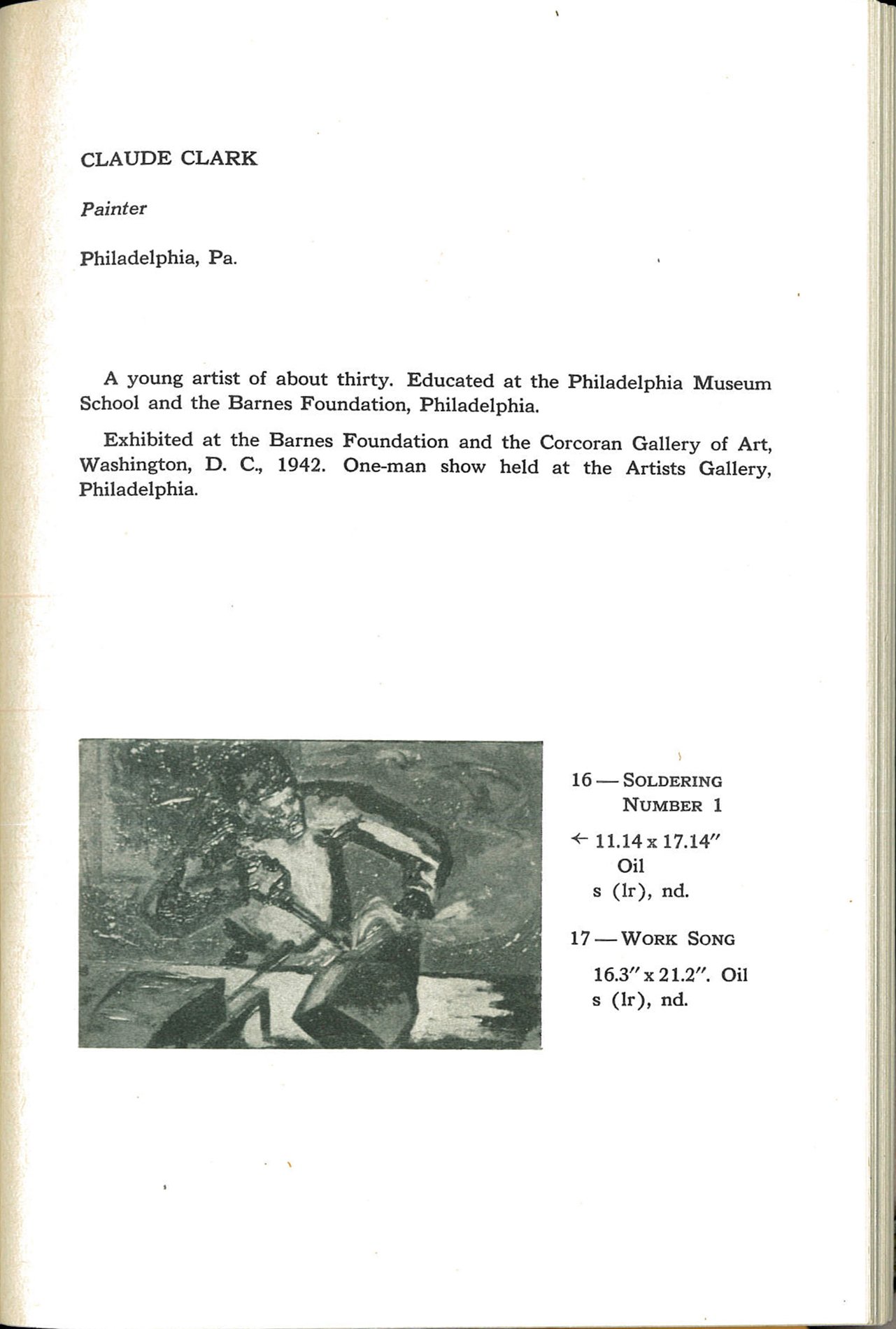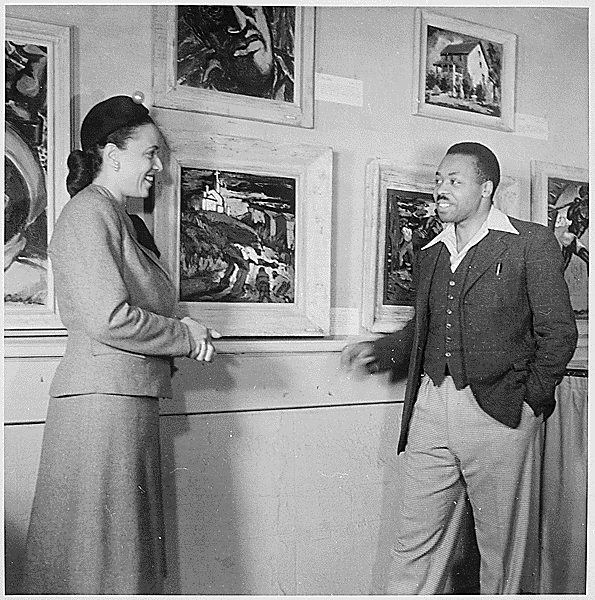Claude Clark
(1915-2001)
Lot 151, Soldering, 1940; oil on masonite, 12 x 18 inches signed; titled and dated verso on artist's label. Price: $7,000.
Exhibited: The Albany Institute of History and Art, The Negro Artist Comes of Age, 1945
Black Art Auction would like to thank Diane Shewchuk, Curator, AIHA, for her assistance in cataloging this lot.
Claude Clark was born on a tenant farm in rural Rockingham, Georgia in 1915. His family was part of the Great Migration, leaving the South in 1923 for Philadelphia, Pennsylvania, in search of a better life and opportunities. As a young person, he became invested in art and literature, and in 1935, he enrolled in the Philadelphia Museum School of Industrial Art. Clark was introduced to the method of applying paint with a palette knife in a manner similar to the work of Van Gogh and Cezanne, creating thickly painted compositions that were loose and modern in style. He favored this technique his entire career, depicting figures, landscapes, still-lifes, street scenes, and abstract compositions.
When Clark finished school in 1939, jobs in the fine arts were scarce, but he found employment through the Works Progress Administration. Soldering was painted in 1940, during this period, yet he felt strongly enough about the work to choose it for an important exhibition four years later. During this time, he also met Dox Thrash and became more interested in printmaking.
In 1945, the Albany Institute of History and Art organized an exhibit called, The Negro Artist Comes of Age, which included the work of 45 African American artists, and drew national attention, especially after it traveled to the Brooklyn Museum. Clark exhibited two works in this important venue: Soldering and Work Song (now included in the Melvin Holmes Collection of African American Art (p. 40).
He exhibited at Michael Freilich’s Roko Gallery in 1946-1947. Roko presented contemporary American artists, especially those working in New York City, and was one of the earliest venues to feature works by African American artists (Beauford Delaney, Walter H. Williams, Charles White, Rose Piper, etc).
Art News wrote this about the exhibit:
Claude Clark ... presents ... an art in which strong feelings are translated into paint. Forceful army scenes, figure studies...and powerful landscapes reveal Clark's concern with human and psychological values. Brilliant color harmonies and a moving sense of design contribute to their achievement. The flower paintings show his feeling for color at its purest…
Photo: Claude Clark exhibit at ROKO Galleries; National Archives Catalog, Harmon Foundation Collection 1922 – 1967, Negro Art Exhibits, Workshops and Demonstrations 1935 – 1947
In 1944, Albert Barnes purchased Clark’s painting, Cutting Pattern, making Claude Clark the second living Black artist to be included in the Barnes Foundation collection (after Horace Pippin). In 1949, when Clark was denied attendance due to his race at a statewide art exhibit at the University of Alabama (where his students were exhibiting), he enlisted Dr. Barnes to help him protest the opening. Together, they influenced the keynote speaker and other significant invitees not to attend.
Clark worked as a teacher in the Philadelphia public school system in the mid-1940s, returning to the South in 1948 to take a position as chair of the art department at Talladega College. He remained there until 1955 when he left to pursue scholarly degrees at Sacramento State University and the University of California Berkeley (MFA, 1962). After graduating, he taught at San Francisco State University and Merritt College in Oakland.
Claude Clark has been widely associated with his work from the 1940s, influenced by labor-related and military themes, but he was also a significant figure in the West Coast art scene of the 1960s-1970s, addressing political and civil rights subjects.
References:
Hatch, John Davis. The Negro Artist Comes of Age: A National Survey of Contemporary American Artists, Albany Institute of History and Art, January 3rd through February 11th, 1945. Albany Institute of History and Art, 1945.
Claude Clark Artworks: Reflections of 20th Century Life (compiled by the family and estate of the artist)
The Johnson Collection, Spartanburg, SC.





